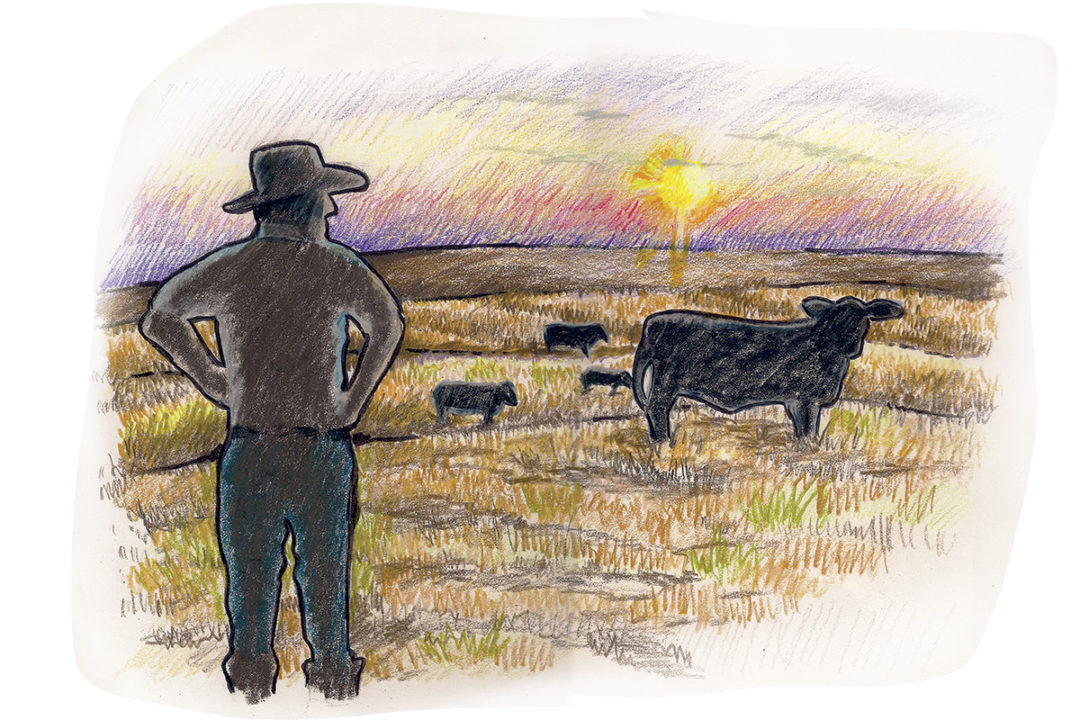When people hear that they need to “make a plan,” it can seem overwhelming, which leads them to looking for anything else to do instead. If I say, “Make a nutrition plan,” you are probably going to suddenly decide it sounds like a great time to fix all your water gaps and check the wheel bearings on your trailer.
We’re currently awash in the kinds of externalities that reinforce how little control we have over variables like markets and the weather. A lot of producers think about the impacts of those sorts of swings and decide that it’s useless to plan. I believe nothing could be further from the truth. The framework of a plan doesn’t really change if it’s built properly.
The basic starting place is to know what you need and what you have. What I really mean is, what your cattle need and what you have at your disposal to meet those needs. None of this sounds terribly exciting, but it’s necessary work to get where we want to go. You’ll need the basic information: How big are your cows, when do you calve and what is your forage base for a given time of year?
Cow weight is easy; you just need a scale. That value is part of the calculation for your cows’ maintenance requirements. Calving date is so effortless that you probably don’t even need a calendar. Understanding stage of reproduction against the backdrop of your year is the rest of what we need to grasp the cows’ requirements. However, the forage base question is probably a little more complicated.
The word “dynamic” in the title of this article isn’t there by accident. Few pieces of this big puzzle you call a ranch are as complicated as the quantity and quality of your forage, coupled with how much of it your cows will actually consume.
Forage testing is essential to a great nutrition plan, but we are talking about more than just walking out in the middle of your closest pasture, grabbing a handful of grass and stuffing it in an envelope. My recommendation is to take a few strategically located samples from the pastures where the cattle will be. On top of that, I would also recommend taking samples from those areas after greenup, in the middle of the summer, a few weeks after the first frost and in the dead of winter. The same goes for your hay. With all that data together, you’ll have the full picture of how your forages change throughout the year. The results will most likely surprise you. For less than the cost of a new calf-puller, you will know for certain the nutrient content of your forage for the year.
Back to the dynamic part. As genetics improve, you receive more or less rainfall, you change grazing regimens or fertilize differently, so too will your forage base and the requirements of your cattle change. That’s why you need to do at least a little sampling every year, especially on your hay. It’s not really a consideration of if things will change, it’s how much.
Once you’ve gathered all the data, I strongly advise you to find a trusted adviser to help you put together your cohesive, flexible nutrition plan. That could be someone from extension, a person at the local feedstore, or a trained nutritionist.
Only when you’ve established the amount of nutrients your cows will require is it time to examine your options on how to meet those deficits. You could feed the same things you always have in the same amounts, but that defeats the whole purpose of having an actual nutrition plan. You’re likely over- or underfeeding several different nutrients when a more appropriate balance is probably available and more profitable.
The goal is to meet the nutrient requirements of your herd (bulls included) without exceeding them or spending too much money. Remember that we’re looking for a happy medium.
Underfeeding and overfeeding both cost money we can’t afford to give away in any year, much less this one.
For instance, you might discover that your cows are experiencing a copper deficiency. You will want to understand whether that is due to an intake of mineral that’s too low, a mineral that is inadequately fortified or because of an antagonism by another trace mineral, like sulfur. The answer to that question will determine your course forward. Making the wrong decision here will cost you money and, more importantly, time.
All those action items apply to every year, but how do you adjust to the variances that plague us and change the actual needs of our animals and supplies of nutrients in our forage base? The answer is easy, but it isn’t very well liked: You have to apply the same principles on a more granular level. If your rainfall total is far above or below average, take a few more samples to see what your grass is really providing to your cows. If your cows slip in body condition, recalculate (or ask your trusted adviser) in order to better understand what shortages caused you to get in this predicament, and correct them in the most economically efficient manner possible.
Whatever you decide to do, make a commitment to yourself and your cattle that you’ll make positive, meaningful change in how you plan for next year, then how you’ll react to new information and developments as they happen.











